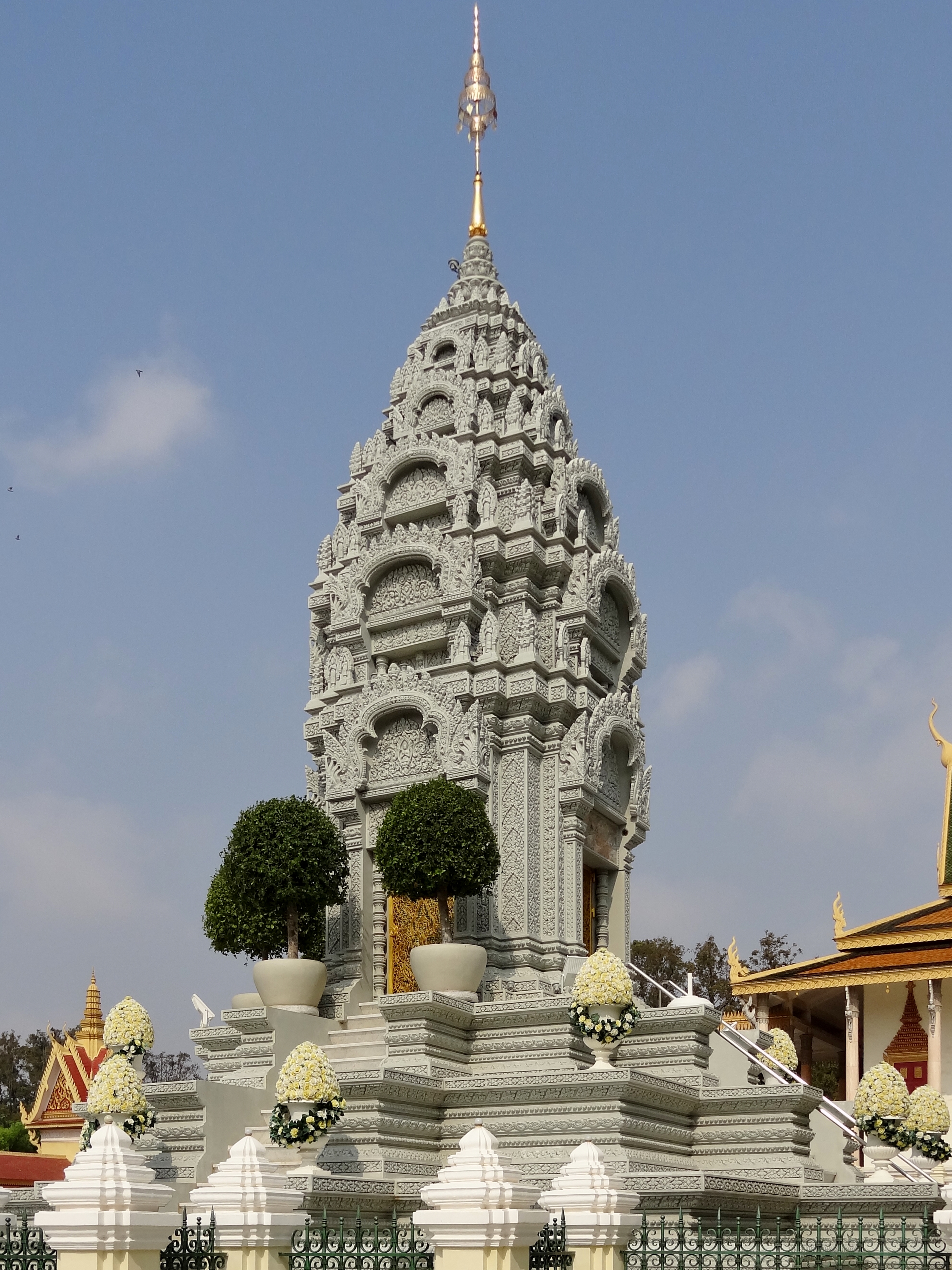|
Ko Tao
Ko Tao (, , ) is an island in Thailand and is part of the Chumphon Archipelago on the western shore of the Gulf of Thailand. It covers an area of about 21 km2 (8 sq mi). Administratively it is a subdistrict (''tambon'') of Ko Pha-ngan District (''amphoe'') of Surat Thani Province. , its official population was 1,382. The main settlement is Ban Mae Haad. The economy of the island is almost exclusively centered on tourism, especially scuba diving. Scuba diving is extremely popular in Ko Tao due to clear visibility, inexpensive pricing, warm water, and the range of sealife to be seen. History Before being settled the island would be occasionally visited by fishermen from neighbouring islands looking for shelter in a storm or just resting before continuing on their journeys. It would appear from old maps and descriptions that this island was known by European cartographers and mariners as "Pulo Bardia", indicating that it was first settled by Malayo-Polynesian peoples. The o ... [...More Info...] [...Related Items...] OR: [Wikipedia] [Google] [Baidu] |
Time In Thailand
Thailand follows UTC+07:00, which is 7 hours ahead of UTC. The local mean time in Bangkok was originally UTC+06:42:04. Thailand used this local mean time until 1920, when it changed to Indochina Time, UTC+07:00; ICT is used all year round as Thailand never observed daylight saving time. Thailand shares the same time zone with Vietnam, Cambodia, Laos, Christmas Island, and Western Indonesia, as well as parts of Russia. History * Prior to 1 January 1901, locations in Siam with an astronomical observatory would adopt local mean time based on the observatory's geographic position. Chiang Mai Province and two other provinces each had an observatory, hence, each province had its own distinct local mean time, with minutes of difference between the three locations. * On 1 April 1920, the mean time of the 105th meridian east (passing through Ubon Ratchathani Province) was adopted by Siam as the new standard time. The mean time of the 105th meridian is 7 hours ahead of Green ... [...More Info...] [...Related Items...] OR: [Wikipedia] [Google] [Baidu] |
Corallivore
A corallivore is a carnivore, carnivorous animal that feeds on coral. Corallivores are an important group of reef organism because they can influence coral abundance, distribution, and community structure. Corallivores feed on coral using a variety of unique adaptations and strategies. Known corallivores include certain mollusks, annelids, fish, crustaceans, flatworms and echinoderms. The first recorded evidence of corallivory was presented by Charles Darwin in 1842 during his The Voyage of the Beagle, voyage on HMS ''Beagle'' in which he found coral in the stomach of two ''Scarus'' parrotfish. History While visiting the Cocos (Keeling) Islands in 1842, Charles Darwin was told by an Englishman living on the islands that there were large shoals of parrotfish that subsisted entirely on coral. Darwin dissected several parrotfish and found pieces of coral and finely ground calcareous material in their stomach. This led Darwin to correctly theorize that some species of parrotfish cons ... [...More Info...] [...Related Items...] OR: [Wikipedia] [Google] [Baidu] |
Clown Triggerfish
The clown triggerfish (''Balistoides conspicillum''), also known as the bigspotted triggerfish, is a demersal marine fish. Taxonomy Although it is in the genus ''Balistoides'' alongside the titan triggerfish ('' Balistoides viridescens''), the genus is not monophyletic and requires revision. As a result, the clown and titan triggerfish are not each other's closest relatives. The clown triggerfish is possibly most closely related to species of the genus ''Melichthys'' and the orange-lined triggerfish ('' Balistapus undulatus''). Description The clown triggerfish is a fish which grows up to 50 cm (19.7 inches) in the wild, however, in captivity it does not usually reach that length. Its body has a stocky appearance, oval shape and compressed laterally. The head is large and represents approximately one third of the body length. The mouth is small, terminal and has strong teeth. The first dorsal fin is composed of three spines, one of which is longer and stronger. It is er ... [...More Info...] [...Related Items...] OR: [Wikipedia] [Google] [Baidu] |
Titan Triggerfish
The titan triggerfish, giant triggerfish or moustache triggerfish (''Balistoides viridescens'') is a large species of triggerfish found in lagoons and at reefs to depths of in most of the Indo-Pacific, though it is absent from Hawaii. With a length of up to , it is the largest species of triggerfish in its range (the stone triggerfish, ''Pseudobalistes naufragium'', from the east Pacific is larger). Behavior With left The titan triggerfish is Diurnality">diurnal and solitary. It feeds on sea urchins, mollusc">sea_urchin.html" ;"title="Diurnality">diurnal and solitary. It feeds on sea urchin">Diurnality">diurnal and solitary. It feeds on sea urchins, molluscs, crustaceans, tube worms and coral. It often feeds by turning over rocks, stirring up sand and biting off pieces of branching coral. This is why other smaller fish species are often seen around it, as they feed on the detritus and smaller organisms that are stirred up. Titan triggerfish are one of a number of species ... [...More Info...] [...Related Items...] OR: [Wikipedia] [Google] [Baidu] |
Great Barracuda
''Sphyraena barracuda'', commonly known as the great barracuda, is a species of barracuda, a genus of 27 species of large ray-finned fish found in subtropical oceans worldwide. In its natural habitat, the great barracuda is an apex predator. Distribution and habitat The great barracuda is present in tropical to warm temperate waters, in subtropical parts of the Indian, Pacific, and Atlantic oceans. Primarily found in oceans near the equator, the great barracuda finds refuge in mangroves to deep reefs, and seagrass beds, up to depths of . Juveniles and small adults typically inhabit locations near the shore, such as mangroves and seagrass meadows, while adults are typically found further away from shore around artificial structures, reefs, and rock outcroppings. These fish use these structures as a form of refuge. Studies conducted by a research group that tagged and monitored these fish in the Bahamas concluded that a significant proportion of the population stayed in their ... [...More Info...] [...Related Items...] OR: [Wikipedia] [Google] [Baidu] |
Turtle
Turtles are reptiles of the order (biology), order Testudines, characterized by a special turtle shell, shell developed mainly from their ribs. Modern turtles are divided into two major groups, the Pleurodira (side necked turtles) and Cryptodira (hidden necked turtles), which differ in the way the head retracts. There are 360 living and recently extinct species of turtles, including land-dwelling tortoises and freshwater terrapins. They are found on most continents, some islands and, in the case of sea turtles, much of the ocean. Like other Amniote, amniotes (reptiles, birds, and mammals) they breathe air and do not lay eggs underwater, although many species live in or around water. Turtle shells are made mostly of bone; the upper part is the domed Turtle shell#Carapace, carapace, while the underside is the flatter plastron or belly-plate. Its outer surface is covered in scale (anatomy), scales made of keratin, the material of hair, horns, and claws. The carapace bones deve ... [...More Info...] [...Related Items...] OR: [Wikipedia] [Google] [Baidu] |
British Tabloid
Tabloid journalism is a popular style of largely sensationalist journalism, which takes its name from the tabloid newspaper format: a small-sized newspaper also known as a half broadsheet. The size became associated with sensationalism, and ''tabloid journalism'' replaced the earlier label of ''yellow journalism'' and ''scandal sheets''. Not all newspapers associated with tabloid journalism are tabloid size, and not all tabloid-size newspapers engage in tabloid journalism; since around the year 2000, many broadsheet newspapers converted to the more compact tabloid format. In some cases, celebrities have successfully sued tabloids for libel, demonstrating that the tabloid's stories have defamed them. Publications engaging in tabloid journalism are also known as rag newspapers or simply rags. In the 21st century tabloid journalism has shifted to online platforms targeting youth consumers with celebrity news and entertainment. Scandal sheets Scandal sheets were the precu ... [...More Info...] [...Related Items...] OR: [Wikipedia] [Google] [Baidu] |
Boulder
In geology, a boulder (or rarely bowlder) is a rock fragment with size greater than in diameter. Smaller pieces are called cobbles and pebbles. While a boulder may be small enough to move or roll manually, others are extremely massive. In common usage, a boulder is too large for a person to move. Smaller boulders are usually just called rocks or stones. Etymology The word ''boulder'' derives from ''boulder stone'', from Middle English ''bulderston'' or Swedish ''bullersten''. Online Etymology Dictionary. Retrieved December 9, 2011, from Dictionary.com website. About In places covered by s during |
Bangkok Post
The ''Bangkok Post'' is an English-language daily newspaper published in Bangkok, Thailand. It is published in broadsheet and digital formats. The first issue was sold on 1 August 1946. It had four pages and cost one baht, a considerable amount at the time when a baht was a paper note. It is Thailand's oldest newspaper still in publication. The daily circulation of the ''Bangkok Post'' is 110,000, 80 percent of which is distributed in Bangkok and the remainder nationwide. It is considered a newspaper of record for Thailand. From July 2016 until mid-May 2018, the editor of the ''Bangkok Post'' was Umesh Pandey. On 14 May 2018, Pandey was "forced to step down" as editor after refusing to soften coverage critical of the ruling military junta. History The ''Bangkok Post'' was founded by Alexander MacDonald, a former OSS officer, and his Thai associate, Prasit Lulitanond. Thailand at the time was the only Southeast Asian country to have a Soviet Embassy. The U.S. embassy felt it ... [...More Info...] [...Related Items...] OR: [Wikipedia] [Google] [Baidu] |
Blue Spotted Stingray
Blue is one of the three primary colours in the RYB colour model (traditional colour theory), as well as in the RGB (additive) colour model. It lies between violet and cyan on the spectrum of visible light. The term ''blue'' generally describes colours perceived by humans observing light with a dominant wavelength that's between approximately 450 and 495 nanometres. Most blues contain a slight mixture of other colours; azure contains some green, while ultramarine contains some violet. The clear daytime sky and the deep sea appear blue because of an optical effect known as Rayleigh scattering. An optical effect called the Tyndall effect explains blue eyes. Distant objects appear more blue because of another optical effect called aerial perspective. Blue has been an important colour in art and decoration since ancient times. The semi-precious stone lapis lazuli was used in ancient Egypt for jewellery and ornament and later, in the Renaissance, to make the pigment ultramar ... [...More Info...] [...Related Items...] OR: [Wikipedia] [Google] [Baidu] |
Wat Ko Tao
A wat (, ; , ; , ; ; , ) is a type of Buddhist and Hindu temple in Cambodia, Laos, East Shan State (Myanmar), Yunnan (China), the Southern Province of Sri Lanka, and Thailand. Etymology The word ''wat'' is borrowed from the Sanskrit ''vāṭa'' (Devanāgarī: वाट), meaning "enclosure". The term has varying meanings in each region, sometimes referring to a specific type of government-recognised or large temple, other times referring to any Buddhist or Hindu temple. Overview In Buddhism, a ''wat'' is a Buddhist sacred precinct with vihara, a temple, an edifice housing a large image of Buddha and a facility for lessons. A site without a minimum of three resident ''bhikkhu''s cannot correctly be described as a wat although the term is frequently used more loosely, even for ruins of ancient temples. As a transitive or intransitive verb, ''wat'' means to measure, to take measurements; compare ''templum'', from which ''temple'' derives, having the same root as ''templa ... [...More Info...] [...Related Items...] OR: [Wikipedia] [Google] [Baidu] |





